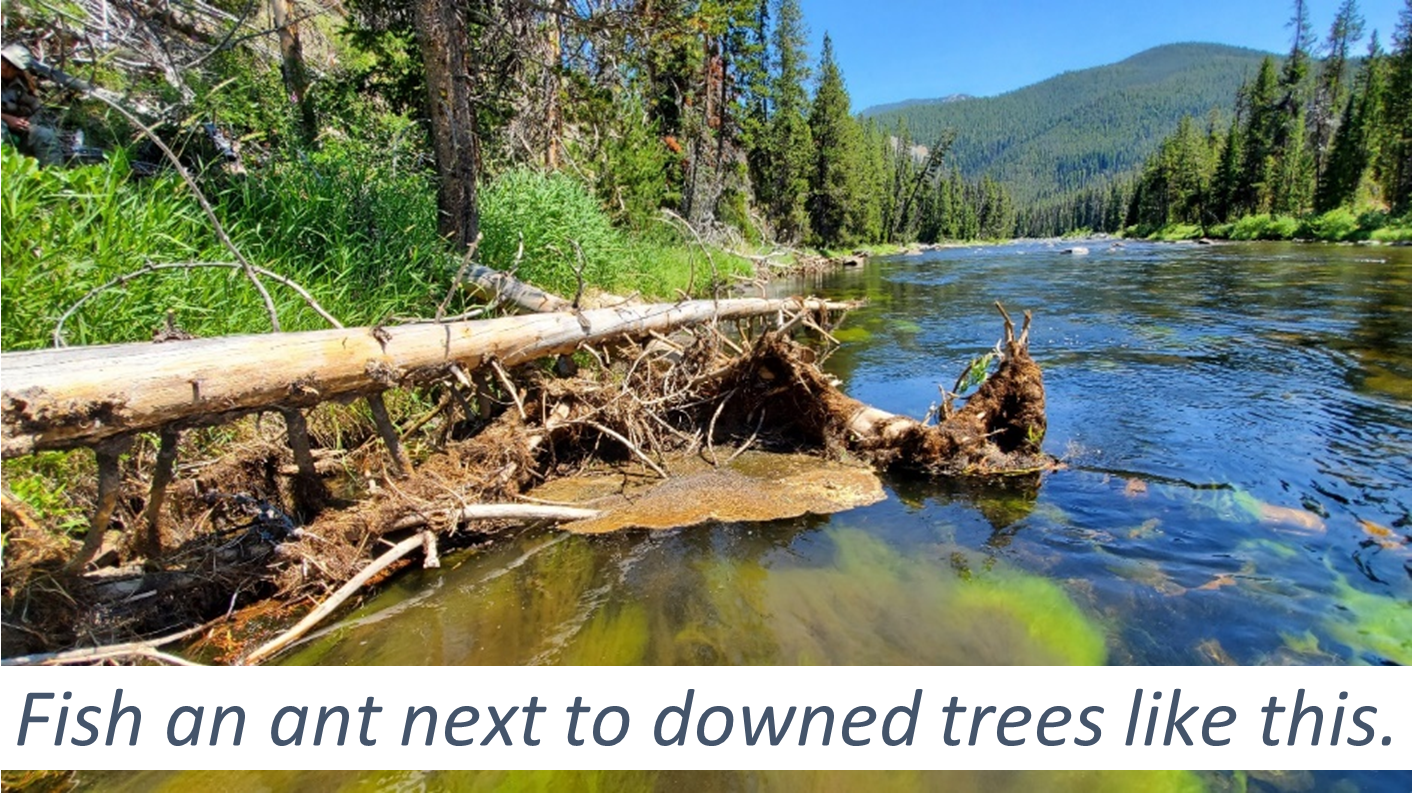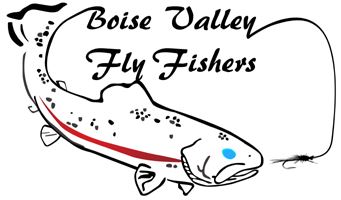It was a peaceful morning at 7,000 feet. The air was cool from the night before and the hot cup of coffee hit the spot. While enjoying the view over the lake something kept dropping on my head. At first I thought it was pine needles from the tree next to me, but then I saw black ants crawling on the bill of my hat. I shook them off and sat back down to finish my coffee, but more ants rained down and I decided to move further from the tree to avoid having to fish them out of my cuppa joe.
That afternoon while fishing the outlet of the lake I had Yellowstone Cutts come up and look at my flys (hoppers, caddis, and misc attractors) but no takers. Remembering the ant rain-storm from the morning I added a #16 black ant as a dropper to my hopper and BAM! First cast a cutthroat took the ant. I fished back through the water I had previously fish and had 6 more cutts come to the ant.
A good reminder, that it is that time of year when an ant pattern should be your go-to fly. Here is a “Bug Corner” article that ran in last year’s Hackle Bender newsletter.
FALL ANTS
When I look back at my September fishing logs I can’t help but notice how many fish have been caught on ants. Usually the ant was a dropper to a bigger fly like a hopper or an October caddis but instead of trout going for those BIG MAC MEALS they wanted the itty-bitty ant—and they often moved a long way to get them!
Ants are terrestrials so it is productive to fish them close to shore and especially near downed trees. Ant patterns are small and not very visible so they work well as a dropper to a larger fly. And it’s OK if they sink a bit because ants often get drowned and trout are on the lookout for them subsurface. In fact, sometimes a sunken ant will out-fish one on the surface.

I usually fish a black or cinnamon color ant in size #16 or #18 but some people swear by a size #20 ant. For years I used a traditional dubbed body ant with black hackle for legs but the last few years I’ve been using a foam-cylinder ant. They are easy to tie, float well and have a bright indicator built in that make them much more visible on the water. It’s also good to have some flying ants in your box as you never know when that hatch is going to happen, and Egan’s Bionic Ant is worth adding to your box.
Fly Patterns
Foam Cylinder Ant
Bionic Ant

